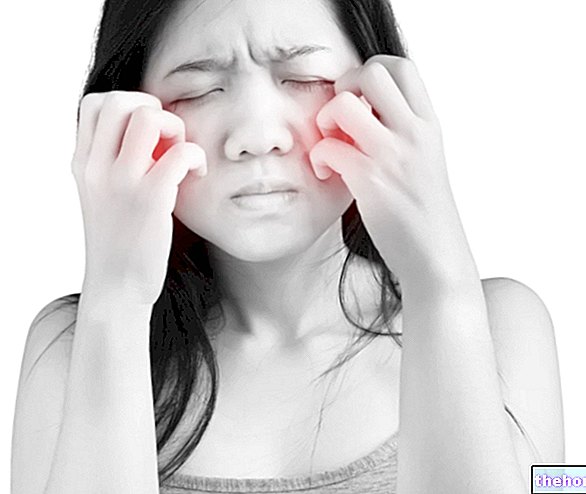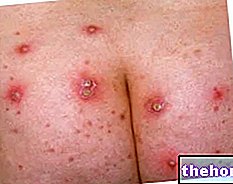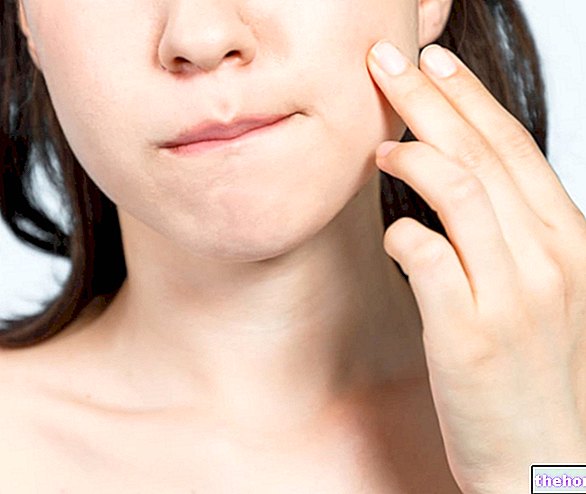Generality
The term hyperhidrosis indicates an "excessive secretion of sweat compared to the norm; it can be generalized, limited and appear as a result of environmental or emotional factors. Other causes of hyperhidrosis can be endocrine stimuli (hypoglycemia, hyperthyroidism), dietary (high consumption of foods or supplements containing caffeine, capsaicin or other thermogenic agents), pharmacological (antipyretics, cholinergics, antidepressants, amphetamines) and vegetative (hyperhidrosis induced by vomiting, nausea or pain).
Sweat and Sweating

Causes
Hyperhidrosis therefore represents a significant obstacle to social relations, as well as a possible indication of a pathological state. When it is determined by an idiopathic phenomenon (the causes of which are unknown) we speak of primary hyperhidrosis; when instead it is the manifestation of a pathological process (hyperthyroidism, psychiatric diseases, obesity, hormone therapy or endocrine alterations linked, for example, to menopause) we speak of secondary hyperhidrosis.
The localization of the problem is a first, important, diagnostic clue. If excessive sweating extends to the entire body surface (generalized hyperhidrosis) it is likely that there is an endocrine problem at the base, such as hyperthyroidism (excessive production of thyroid hormones), pharmacological, feverish etc.
Emotional states are generally implicated in the onset of local hyperhidrosis, which is predominantly found in the palms, soles of the feet, axillary area and forehead. While excessive sweating in the extremities is often associated, axillary hyperhidrosis it can exist on its own. In the latter case, the disorder is almost always an expression of emotional irritability.
Other pathological changes in sweating include chromhidrosis (colored sweat that dyes the clothing it comes into contact with yellow) and bromhidrosis (foul-smelling sweating due to the increased decomposition of apocrine sweat by the skin's bacterial flora).
Treatment
See also: Hyperhidrosis - Medicines for the treatment of Hyperhidrosis
Since hyperhidrosis causes considerable discomfort in the social and work environment (think, for example, of an activity that requires considerable manipulative precision), it is important to establish an adequate therapeutic path. In the first instance, it is necessary to exclude all secondary forms through a "careful anamnesis and further, if necessary, diagnostic investigations such as blood tests.
Clothing and Deodorants
In addition to normal hygiene practices, clothing that is too tight, especially if made of synthetic fibers, should be avoided.
In the pharmacy you can find particular long-lasting deodorants, able to limit the disturbance thanks to the presence of aluminum chloride. Especially indicated for the axillary region, they can also be prepared by the pharmacist (solutions at 20% in absolute alcohol). In this case the local application, to be done preferably before night rest, should be covered with a paper film and removed in the morning with subsequent washing of the affected area. In some cases, aluminum chloride can cause unfavorable topical manifestations (redness, itching ).
Iontophoresis
Even iontophoresis can produce a temporary anhidrosis (loss of the ability to produce sweat), if the antiperspirant strategy with special deodorants has not given the desired effects. The iontophoresis, carried out in an outpatient setting, consists in connecting a low intensity current generator to two water basins (in which the patient's hands or feet are immersed), or to two wet swabs to be applied on the armpits or forehead. The flow of energy charges generated by the device works by blocking the ducts of the sweat glands for a certain period of time. The effectiveness of this therapeutic technique in the treatment of hyperhidrosis is variable, generally good for milder cases and less noticeable in more intense situations.
Medicines
The drug therapy of emotional hyperhidrosis is based on the use of sedatives and anxiolytics, capable of limiting excessive emotionality, but also of reducing the alert threshold and causing drowsiness. The general treatment can also use anticholinergics, but the results are inconstant and often unbearable side effects in the long run.
The use of botulinum toxin applied to the treatment of hyperhidrosis deserves particular attention. This toxin is lethal for man, so much so that a single gram is capable of killing ten million people. Death occurs from flaccid paralysis, that is, the inability to contract muscles (including involuntary ones) due to failure to release. of acetylcholine by the nerve endings. However, if used in infinitesimally small concentrations, the muscle relaxant action of botulinum toxin is limited to the injection area and can thus help to smooth out wrinkles or block sweat secretion (since the activity of the glands responsible for producing sweat it is controlled by the nervous system). Only 4-6 months after injection does a gradual resumption of secretory activity occur and in many cases a single treatment per year is sufficient. The latter, as mentioned, consists of multiple local injections of the botulinum toxin; it is suitable for the axillary area, contraindicated on the face, and can be painful in the absence of adequate anesthesia. Injections of botulinum toxin to treat hyperhidrosis must be more superficial than those given to smooth out expression lines.
Surgery
Finally, in the case of drastic and disabling hyperhidrosis, appropriate surgical interventions are proposed, performed under local anesthesia and based on the removal of the sweat glands or on the interruption of their sympathetic innervation.




-cos-cause-sintomi-e-cura.jpg)











.jpg)











